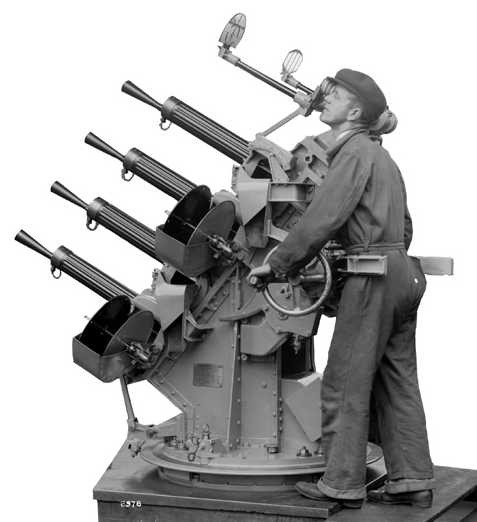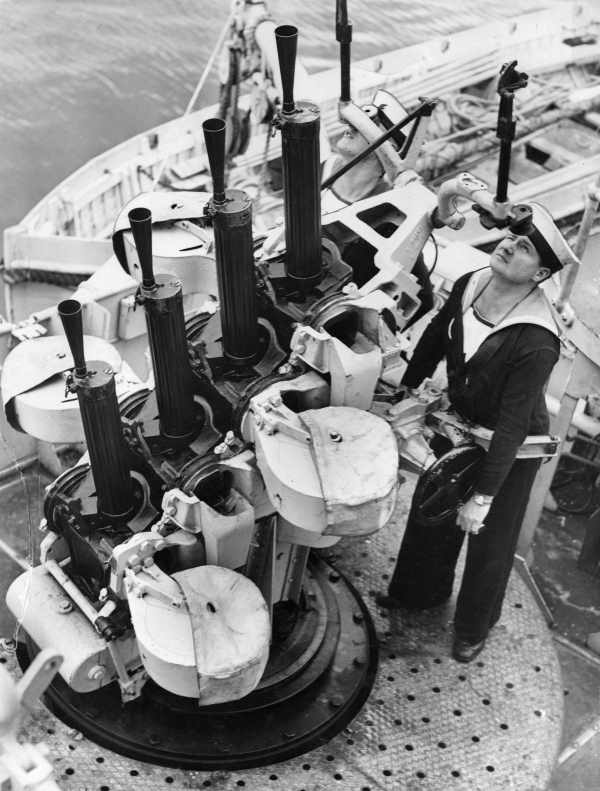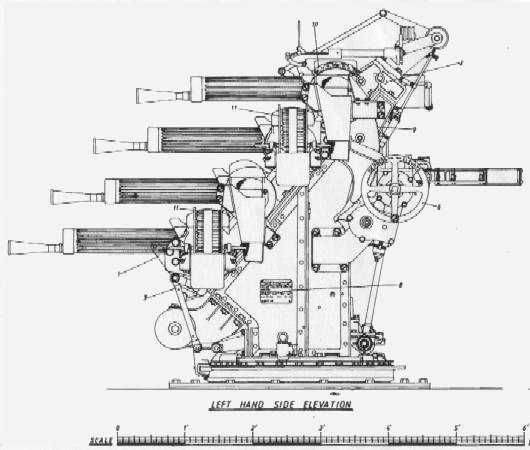|
This was a recoil-operated, water-cooled gun with link-belt ammunition feed, and was significantly less powerful than the USN's 0.50" (12.7 mm) Browning M2 BMG. Like the US and most other nations, the British found small-caliber machine guns like these to be ineffective against modern aircraft. Nonetheless, they were still produced in large numbers during the war with an overall total of 12,500 being built. A few guns were exported to Japan during the late 1930s where they were designated as the 12 mm/62 "HI" Type. These guns were mostly replaced by the start of the Pacific War by the superior 13 mm and 25 mm Hotchkiss guns. An additional 19 guns were purchased by China. Actual bore length was 62.5 calibers. Unless otherwise noted, the data below is for British weapons. |

0.5"/62 (12.7 mm) quad mount under construction
at Vickers
|

Quad 0.50" (12.7 mm) on a destroyer
|

Quad 0.50" (1.27 cm) MG on HMAS Perth
|

Single 0.50" (12.7 mm)
|

Quad 0.5" (12.7 mm) Vickers MG on Mark
II* Mounting
|
| .
See 0.5 Vickers |